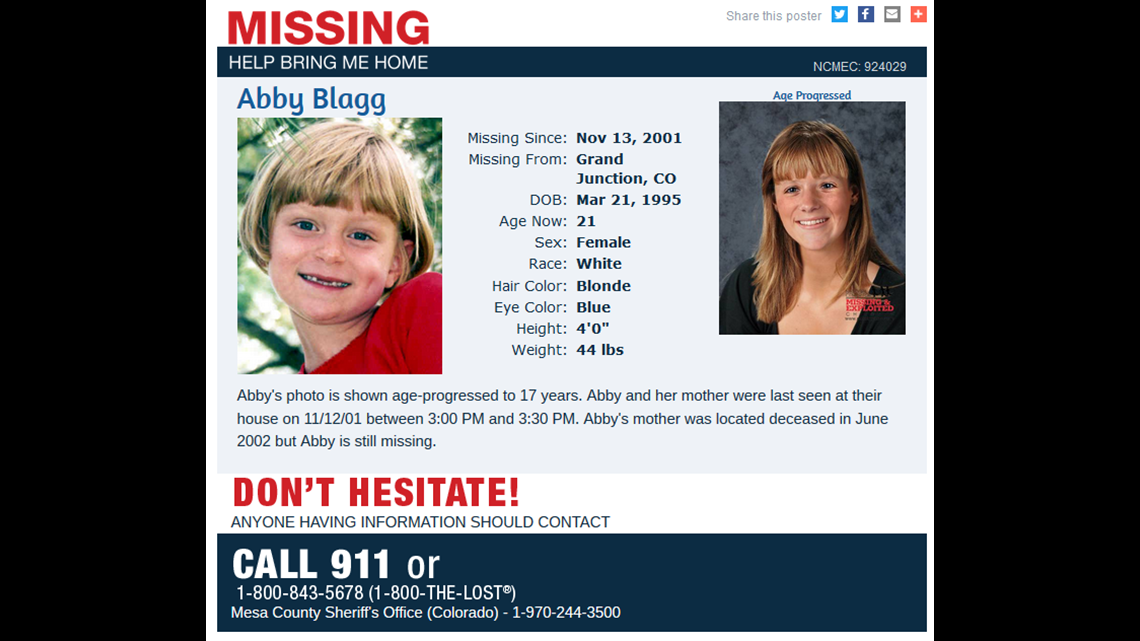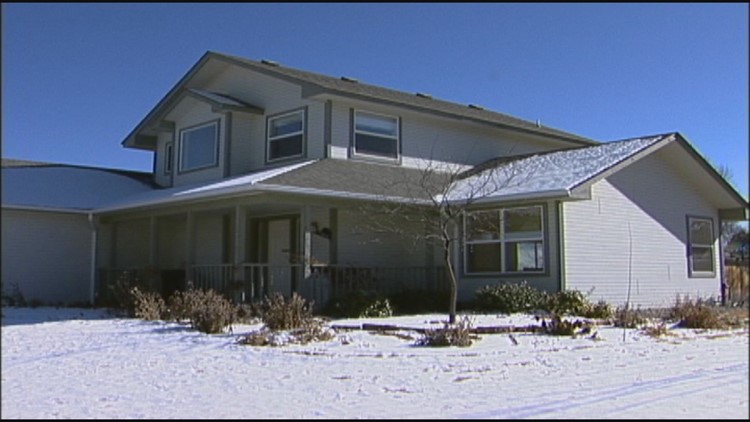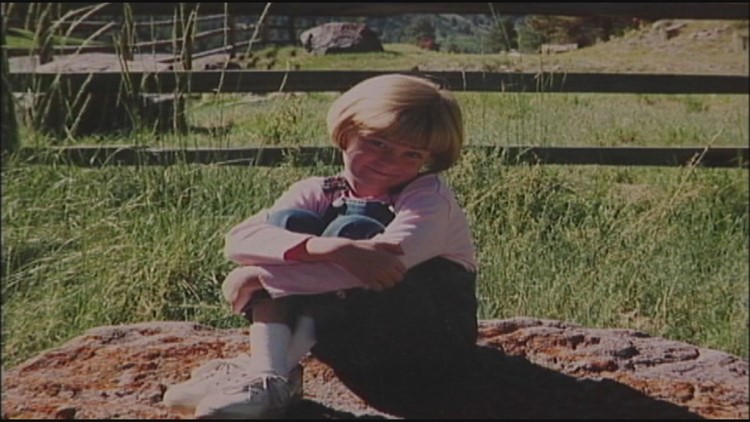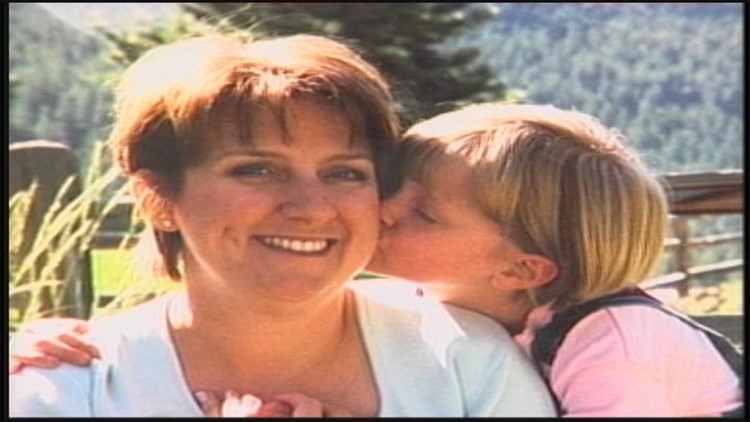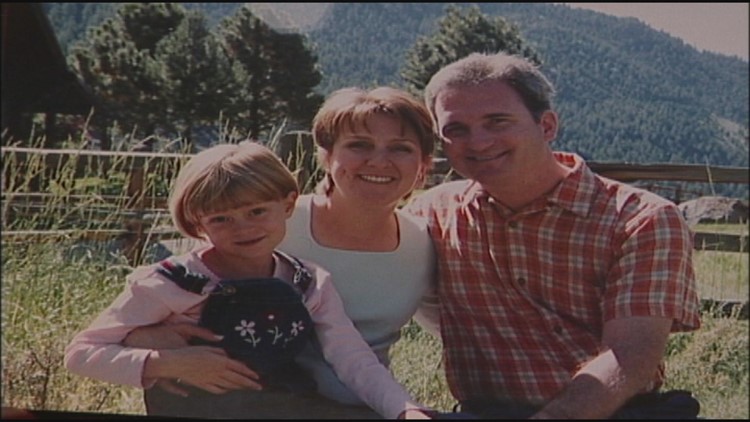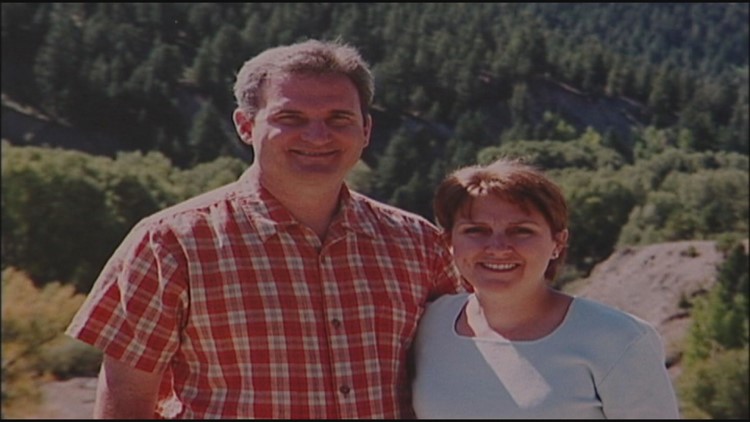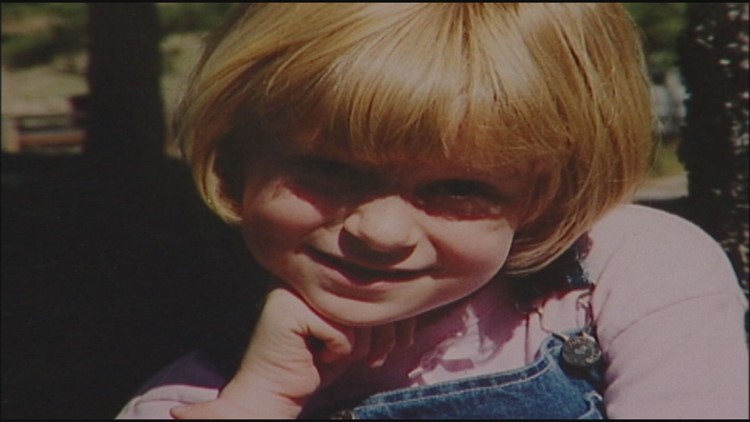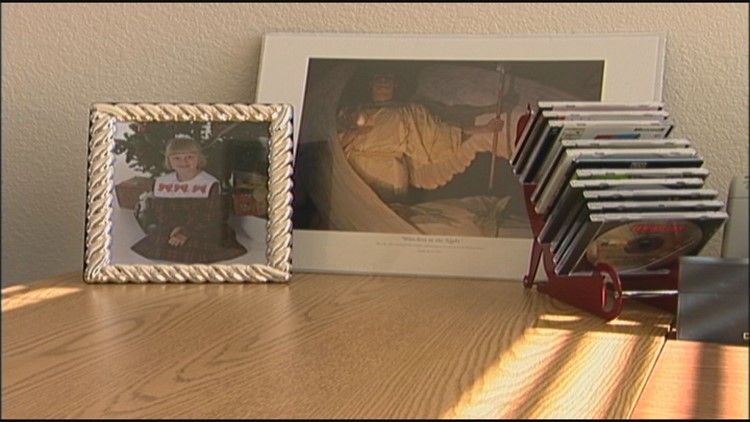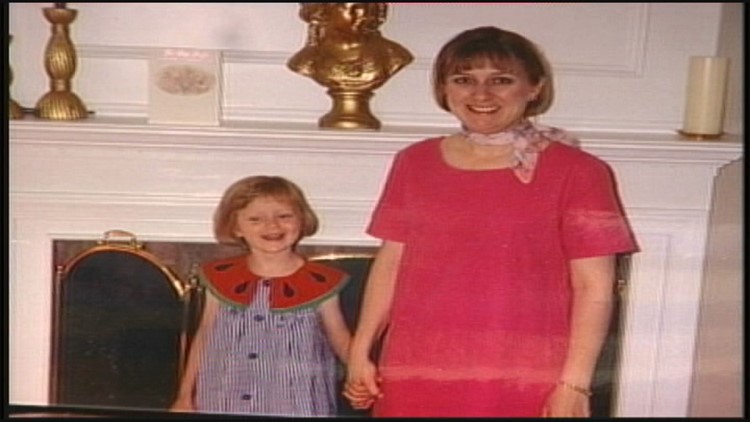JEFFERSON COUNTY - Jurors once again saw the blood-stained bed where Jennifer Blagg likely died as a crime scene reconstruction expert led the court through her analysis of what may have happened during the early morning hours of Nov. 13, 2001.
Iris Dalley took the witness stand on Friday morning. She’s an expert in crime scene reconstruction and blood spatter analysis who has been retained and paid by the prosecution since 2015 — shortly after the Mesa County District Attorney’s Office learned that it would once again have to prove that now-55-year-old Michael Blagg killed his wife.
Photos of Michael, Jennifer and Abby Blagg
Michael Blagg was found guilty of the murder of 34-year-old Jennifer Blagg in 2004, but that conviction was overturned after a juror was caught lying on her questionnaire about being the victim of domestic violence. Now, evidence from a crime that occurred more than 16 years ago is taking the stage hundreds of miles away in a Jefferson County courtroom, where the case was moved due to its notoriety on the Western Slope.
Dalley walked the jury through her simulation of the crime scene — namely the master bedroom of the Blagg’s two-story home in a quiet subdivision just outside of Grand Junction.
At 4:21 p.m. on Nov. 13, 2001, Michael Blagg called 911 to say he came home to find the back door ajar. There was a jewelry box thrown on the floor of the master bedroom, as well as what appeared to be the contents of his wife’s purse. He found a large splatter of blood on his wife’s side of the bed that had dripped onto the clean white carpet. Nothing else in the house was disturbed.
Jennifer Blagg and their 6-year-old daughter Abby were gone.
RELATED: No mistrial in Michael Blagg case
Dalley says in her analysis, the items in the bedroom were likely thrown on the floor after Jennifer Blagg’s body had been removed — and it had likely been very calculated.
“They are definitely consistent with staging,” she said.
Dalley says Jennifer Blagg was probably shot in the face while she was under the covers. She bled for a few minutes until her heart finally stopped beating. Eventually, someone carried the 130-pound woman out of the room.
Blood transfer stains near the sliding back door of the family minivan indicate that she had been placed there, Dalley said. The minivan then left through the garage. She said in her experience, the perpetrator wouldn’t have left through the front or back door.
“I would say in most cases I’ve worked on, most people have concerns about the risk of exposure,” Dalley said.
TUESDAY MORNING STORY: 'It's getting painful': Michael Blagg's attorney grills disgraced state official, investigator
Investigators found the minivan inside of the garage when they first arrived at the crime scene the afternoon of Nov. 13, 2001.
Dalley’s testimony supported the prosecution’s argument that Michael Blagg shot his wife while she was sleeping, wrapped her body into a tent, loaded her into the family minivan and then threw her into the dumpster at his office, Ametek Dixson.
While Abby has never been found, Jennifer Blagg’s decomposed body was found in the Mesa County landfill on June 4, 2002. Prosecutors say it was amid trash from Ametek Dixson.
The defense says this can’t be proven, and that instead, a child predator broke into the Blagg home, killed Jennifer and kidnapped Abby. Ever since, they claim the investigation has been tainted by the false assumption that it’s “always the husband,” and that law enforcement bungled their probe by continuously contaminating the crime scene.
Public Defender Tina Fang questioned Dalley about tire tracks spotted on the other side of the back fence of the Blagg home as well as what one CBI investigator said were scuff marks on the fence.
Dalley said she didn’t notice anything particularly amiss when she looked at photos of the backyard years later, but admitted that she did see the tire tracks. The defense is trying to raise the alternate theory that the perpetrators broke into the back door of the Blagg home. Fang brought up how an investigator was able to do so with a piece of cardboard.
Dalley said she didn’t see any evidence of forced entry in the Blagg home, but admitted that doesn’t rule out so-called “illegal entry.”
Her testimony was after Dr. Gregory Riecks, who was the Blagg’s family physician. He started treating the couple when they moved to Grand Junction in 2000.
Riecks detailed how Jennifer Blagg used to come to the office and complain about low libido and difficulty having sex. The prosecution has argued that this was a source of tension in her marriage, and that Michael Blagg had developed an addiction to online pornography — something that upset his wife.
Michael Blagg, meanwhile, was treated for insomnia —which he said he had dealt with since college — as well as lower back pain.
Despite his difficulty sleeping, Riecks testified that Michael Blagg told him he didn’t feel fatigued during the day. The defense has asked Michael Blagg’s coworkers if he seemed tired at work in the hours before he reported Jennifer Blagg missing.

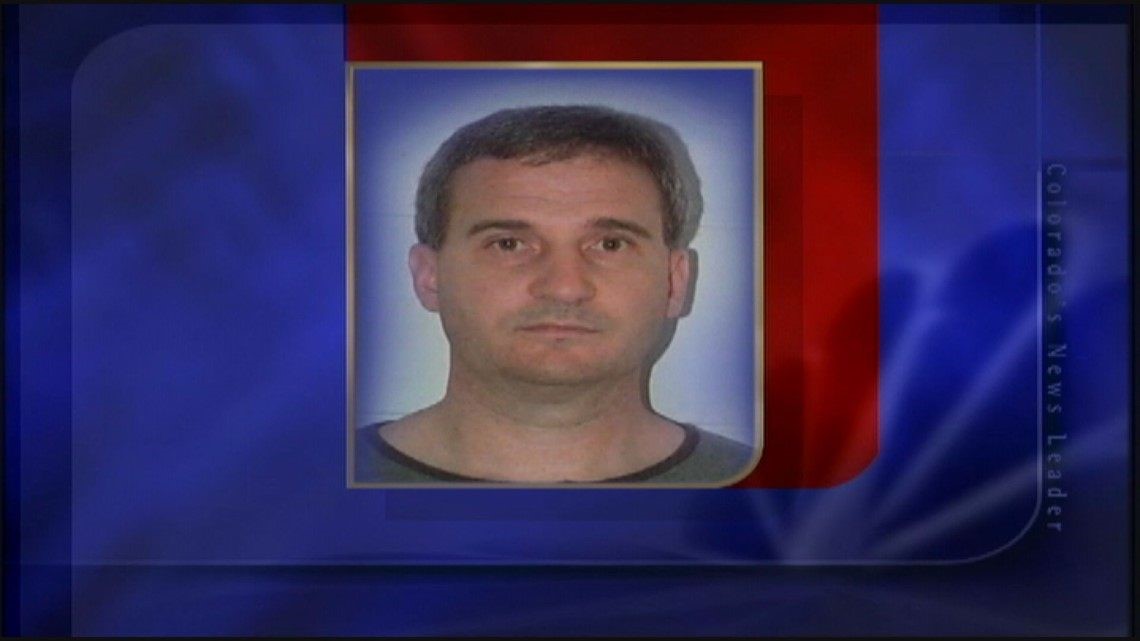
Michael Blagg’s public defenders have also emphasized his lower back pain, which he says was sustained from hard landings as a Navy helicopter pilot, as proof he would have had trouble carrying his wife’s body.
Riecks told the prosecution that less than a week before his wife and daughter’s disappearance, Michael Blagg told him that his new medication had helped with his lower back pain.
This testimony came at the end of week four of the trial, which is two weeks behind schedule. The prosecution is expected to rest its case sometime on Friday, and the defense will begin presenting their arguments, which they say should take “give or take two weeks.”
Testimony will continue after the lunch break. 9NEWS is in the courtroom and will post updates during breaks.

